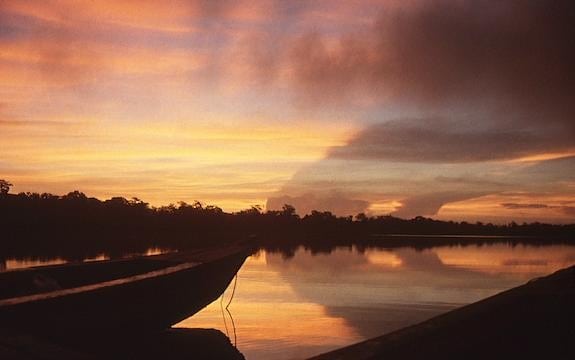
McGill University has found that climate change has had an impact on the size and composition of the Maya population of Itzan, a lowland city in present-day Guatemala. These findings were published in Quaternary Sciences Reviews. They show that both droughts as well as very wet periods lead to significant population declines.
These results were based on a relatively new technique that involves looking at stanols, organic molecules found in human and animal waste. They are taken from the bottom a nearby lake. To estimate population changes and examine the relationship between stanols and other information such as climate variability and changes to vegetation, measurements were made.
The technique allowed the researchers to track major changes in Maya population over a time period that began 3,300 years ago (BP). They also identified shifts in settlement patterns over hundreds of years, which are related to changes in land use.
Furthermore, they discovered that the land was settled much earlier than originally suggested by archaeological evidence.
A new tool gives surprising insight into human presence in the Maya lowlands
Evidence from faecal statols indicates that humans were present at the Itzan escarpment approximately 650 years before archaeological evidence supports it. The evidence also suggests that the Maya occupied the area even though they were smaller after the “collapse” of 800-1000 AD. This was contrary to previous beliefs that all the population had fled the region due to drought or war. Further evidence is provided by historical records of refugees fleeing Spanish attacks on the southern Maya lowlands of the Maya (Nojpeten or modern-day Flores, Guatemala), which indicate a significant population increase.
Ground inspection and excavation have been the best methods to estimate ancient Maya population size. Archaeologists use ground inspection and excavation to reconstruct the population dynamics. They map and count residential buildings and excavate them to determine dates of occupation. They then compare the population trends at the site with those at regional levels. They then use techniques like pollen analysis and indicators soil erosion into lakes to reconstruct any ecological changes that occurred at the same moment.
“This research should assist archaeologists by providing an additional tool to examine changes that may not have been seen in archaeological evidence,” stated Benjamin Keenan (a PhD candidate in McGill’s Department of Earth and Planetary Sciences and first author of the paper. The tropical forest environment makes it difficult to preserve buildings and other records of human activity in the Maya lowlands.
Maya population size is affected by wet and drought periods
Laguna Itzan’s sediment contains faecal substance that confirms that drought caused the Maya population to decline. It happened at three times: between 90-280 AD, 730-900 AD, and the less studied drought between 1350-950 BC. Researchers also discovered that the population fell during a very dry period between 400–210 BC. This is something that has been overlooked until now. Both dry and wet periods showed that population declined in both dry and humid periods.
Peter Douglas, an assistant professor at the Department of Earth and Planetary Sciences and senior author of the paper, stated that “It’s important that society generally knows that civilisations that have been affected by and adapted for climate change” and added that it was not just his work. “By linking climate evidence and population change, we can see a clear connection between precipitation and the capacity of these ancient cities sustain their population.”
Research also suggests that Maya people might have used techniques such as applying human waste (also called night soil) to fertilize crops. This may have helped them adapt to environmental problems such as soil degradation or nutrient loss. The low levels of fecal substances in lake sediments suggests this, at a time when archaeological evidence points to the greatest human population. This could be explained by the fact that human waste was used as fertilizer to soils and the stanols did not get washed into lake.
from ScienceBlog.com https://ift.tt/3x7Ydgx
No comments:
Post a Comment